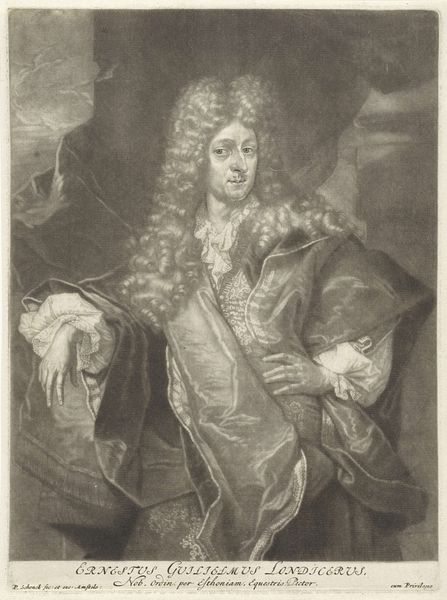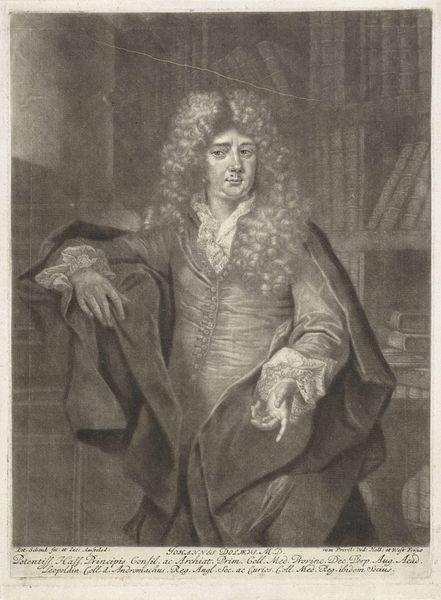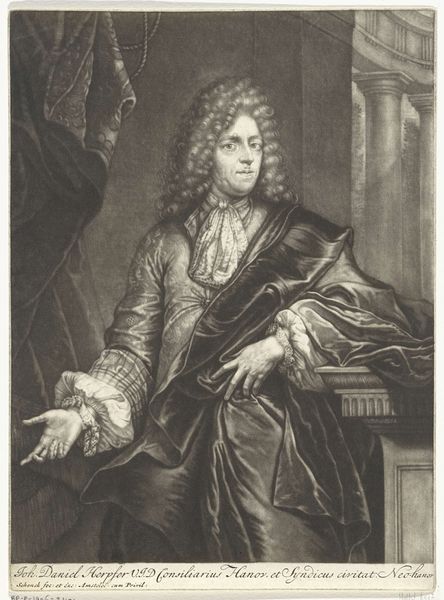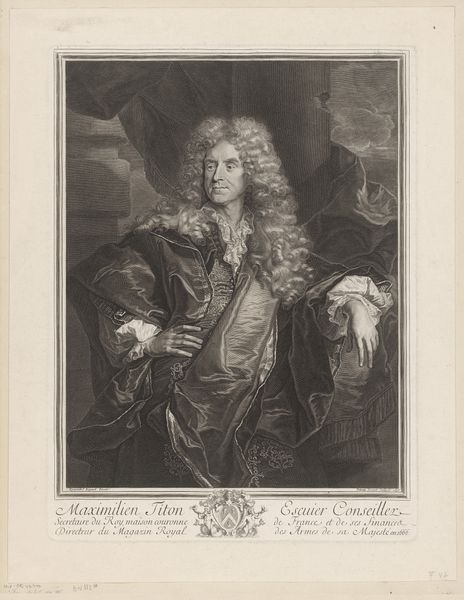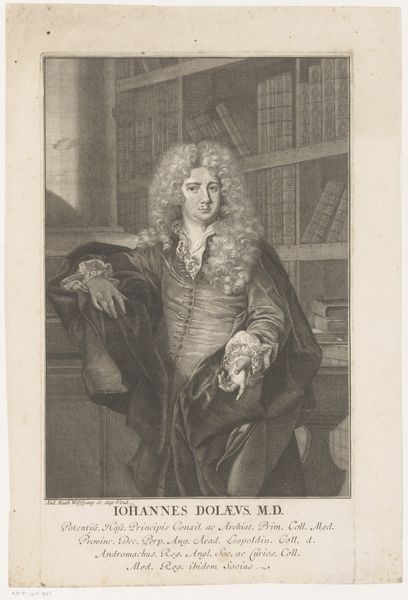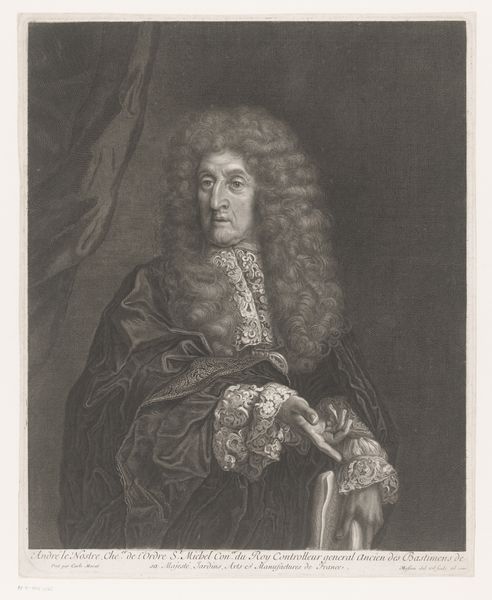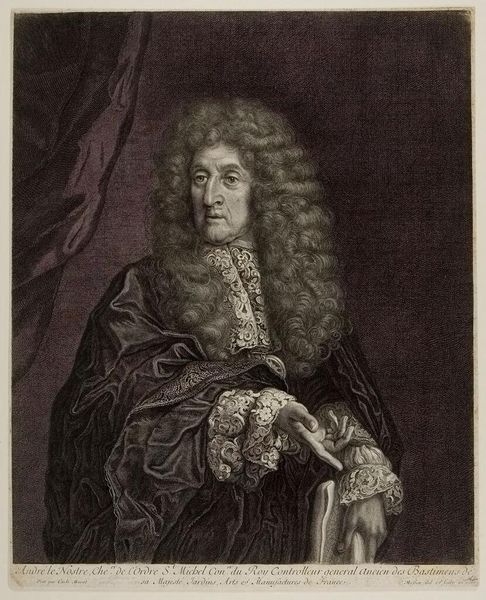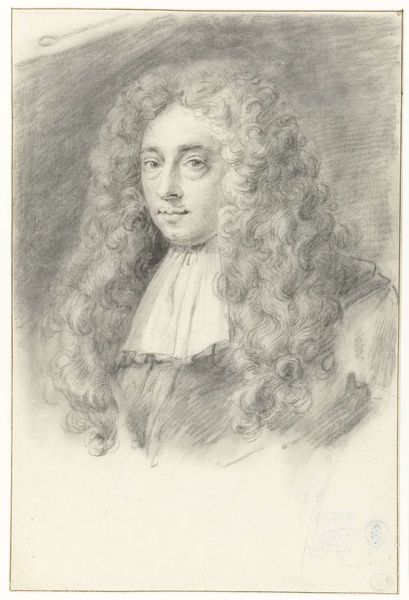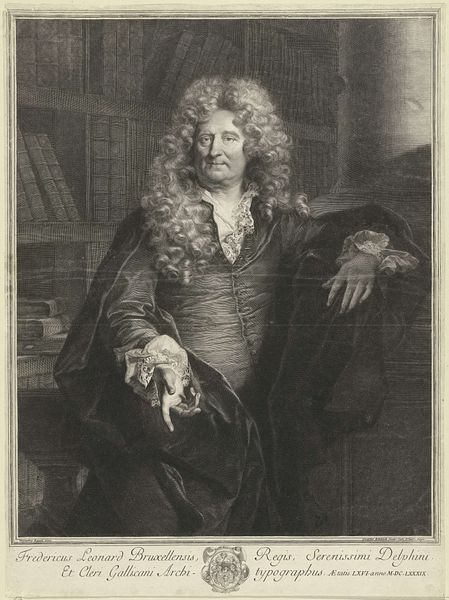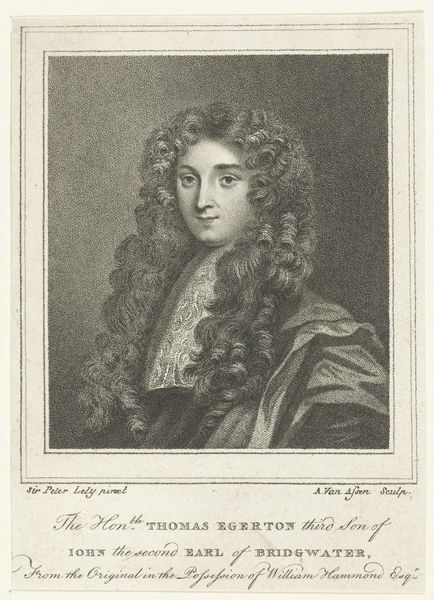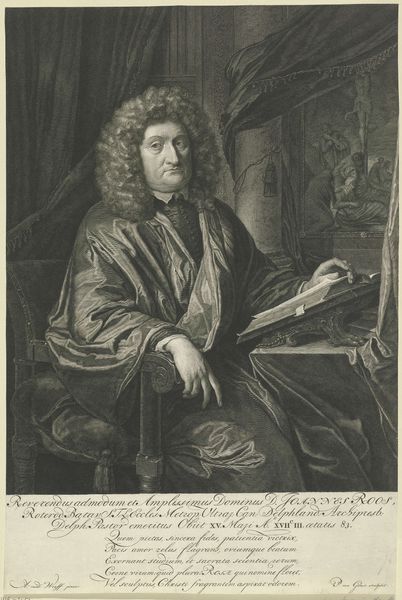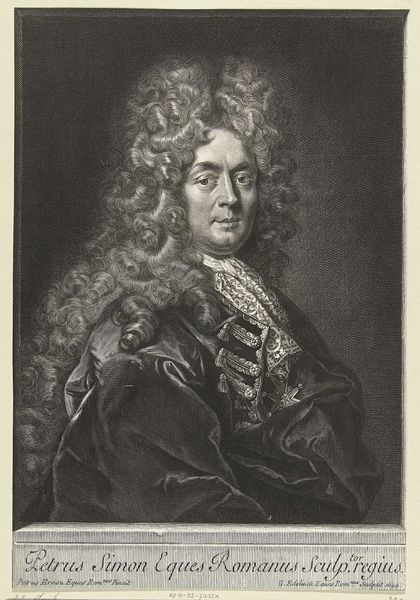
engraving
#
portrait
#
baroque
#
old engraving style
#
line
#
history-painting
#
engraving
Dimensions: height 287 mm, width 226 mm
Copyright: Rijks Museum: Open Domain
Curator: Here we have "Portret van Christiaan Huygens," an engraving by Gèrard Edelinck, made circa 1687-1688. It’s currently housed in the Rijksmuseum. Editor: The level of detail achieved through engraving is extraordinary. There is an inherent tension between the rigorous process of the engraving and the seemingly free, cascading locks of Huygens’ hair. I feel like the printmaker sees him as very intelligent, though not of our social world. What did it mean to picture powerful scientists back then? Curator: That's insightful. This portrait, like many others of the era, operates within established conventions. Consider the deliberate placement of Huygens near architectural elements, a subtle nod to his intellectual pursuits and achievements. Editor: Precisely, architecture in baroque era portraiture signals stability, perhaps even some form of status, but doesn’t Huygens stand apart somewhat? He is near an outdoor space that seems as carefully constructed as a stage set. As one of the great scientific and mathematical minds, what does the line engraving of his own person, his corporeal self, aim to assert, especially through lines? Curator: Consider the semiotics of line in Edelinck’s technique. The density and direction create tone and shadow. Lines are controlled, precise, allowing Edelinck to articulate features. It suggests his analytical ability but also reflects his interest in structure. Editor: But Edelinck had to be acutely aware of Huygens’ impact beyond scientific structures. Placing Huygens so specifically inserts him into political dimensions through that artistic representation. Doesn’t the baroque style indicate a personification of the elite? Are these constructed, posed representations of scientific prowess indirectly tied to colonial power and structures, even in his mind and vision as he stands just beyond the balustrade? Curator: A possible and very provocative reading. But I must point out the art object itself, made of a matrix of lines that reflect more of what could have interested the public: the depiction of light and shadow and form through strictly artistic and graphic means. Editor: Ultimately, it shows that a portrait is more than the face of one man; it represents a cultural framework of history, influence, and, of course, its limits. Curator: A beautiful way to conclude. The complexity of Edelinck's "Portret van Christiaan Huygens" certainly invites many such dialogues.
Comments
No comments
Be the first to comment and join the conversation on the ultimate creative platform.
